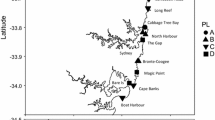Abstract
The Great Barrier Reef Marine Park was established to provide for conservation and ecologically sustainable multiple use of 344,400 km2 of a large marine ecosystem. Management is based on multiple use, with zoning as a fundamental component of marine spatial planning. The legislative framework, including a specific Act and Regulations, address the objectives of ecosystem-based, integrated management of human uses and impacts consistent with best contemporary understanding of biological diversity. Zoning is one of a suite of management tools that include other spatial and temporal management tools and non-spatial measures including public education, community engagement, codes of environmental best practice, industry partnerships and economic instruments. The first section of the Great Barrier Reef Marine Park came into operation in 1981 and the most recent zoning came into operation in mid 2004. The paper discusses some common misunderstandings about zoning and identifies lessons that appear relevant for others addressing management and use of marine ecosystems and natural resources.
Similar content being viewed by others
References
COMLAW (2008) Great Barrier Reef Marine Park Act 1975 Act Compilation - C2008C00633 Attorney-General’s Department, Canberra, Australia. Available online via http://www.austlii.edu.au/au/legis/cth/consol_act/gbrmpa1975257/ Accessed 12 January 2011
Commonwealth of Australia (2006) Review of the Great Barrier Reef Marine Park Act 1975 Review Panel Report. Department of the Environment and Heritage, Canberra Australia. http://www.environment.gov.au/coasts/gbr/publications/gbr-marine-park-act.html. Accessed 12 January 2011
Day J (2002) Zoning—lessons from the Great Barrier Reef Marine Park. Ocean Coast Manage 45(2.3):139–156
Day J, Fernandes L, Lewis A, De'ath G, Slegers S, Barnett B, Kerrigan B, Breen D, Innes J, Oliver J, Ward T, Lowe D (2000) The representative areas program for protecting the biodiversity of the Great Barrier Reef World Heritage Area. Proceedings of the Ninth International Coral Reef Symposium, Bali. 23–27 Oct. 2000, vol. 2, pp 687–696
Day JC, Fernandes L, Lewis A, Innes J (2004) RAP - An ecosystem level approach to biodiversity protection planning. Proc. Second International Tropical Marine Ecosystems Management Symp.: Manila, Philippines, March 2003: 257–265. http://www.gbrmpa.gov.au/corp_site/info_services/library/resources/staff_papers. Accesssed 12 January 2011
Day J, Fernandes L, Jago B (2005) Planning for the future of the Great Barrier Reef. Queensland Planner 45(3):12–14
Dobbs K, Day J, Skeat H, Baldwin J, Molloy F, McCook L, Johnson M, Elliot B, Skeat A, Vohland K, Wachenfeld D, Kenchington R (2011) Developing a long-term outlook for the Great Barrier Reef, Australia: a framework for adaptive management reporting underpinning an ecosystem-based management approach. Mar Policy 35(2):233–240
Doherty P (2005) Ocean zoning: can it work in the Northwest Atlantic? Workshop Proceedings. Marine Issues Committee special publication No. 14. Ecology Action Halifax, Nova Scotia, Canada, p114
Fernandes L, Day JC, Lewis A, Slegers S, Kerrigan B, Breen D, Cameron D, Jago B, Hall J, Lowe D, Innes J, Tanzer J, Chadwick V, Thompson L, Gorman K, Simmons M, Barnett B, Sampson K, De'ath G, Mapstone B, Marsh M, Possingham H, Ball I, Ward T, Dobbs K, Aumend J, Slater D, Stapleton K (2005) Establishing representative no-take areas in the Great Barrier Reef: Large-scale implementation of theory on marine protected areas. Conserv Biol 19(6):1733–1744
Great Barrier Reef Marine Park (1981) Nomination of the Great Barrier Reef by the Commonwealth of Australia for inclusion in the World Heritage List. GBRMPA Townsville, p37
Great Barrier Reef Marine Park (1994) The Great Barrier Reef - Keeping it Great - a 25 year Strategic plan for the Great Barrier Reef World Heritage Area. GBRMPA Townsville, p64
Great Barrier Reef Marine Park (2004) Policy on managing scientific research in the Great Barrier Reef Marine Park GBRMPA Townsville, p22. http://www.gbrmpa.gov.au/__data/assets/pdf_file/0006/7872/research_policy_2004.pdf. Accessed 12 January 2011
Great Barrier Reef Marine Park (2005) The Representative Areas Program (RAP): Restoring the biodiversity of the Great Barrier Reef. http://www.gbrmpa.gov.au/__data/assets/pdf_file/0003/38739/RAP_RestoringTheBioOfGBR.pdf. Accessed 12 January 2011
Great Barrier Reef Marine Park Authority (2009) Great Barrier Reef Outlook Report. GBRMPA Townsville, p192
Kenchington RA (1991) Tourism development in the Great Barrier Reef Marine Park. Ocean Coast Manage 15:57–78
Lawrence DR, Kenchington RA, Woodley SJ (2002) The Great Barrier Reef: finding the right balance. Melbourne University Press, Melbourne, p 263
Lucas PHC, Webb T, Valentine PS, Marsh H (1997) The outstanding universal value of the Great Barrier Reef world heritage area. GBRMPA, Townsville, p 196
Oceans Policy Task Force (2010) Final recommendations of the Inter-Agency Ocean Policy Task Force, July 19 2010. White House Council on Environmental Quality. www.whitehouse.gov/administration/eop/ceq/initiatives/oceans. Accessed 05 October 2010
Possingham HP, Ball I, Andelman SJ (2000) Mathematical methods for identifying representative reserve networks. In: Ferson S, Burgman MA (eds) Quantitative methods for conservation biology. Springer, New York, pp 291–305
Russ GR, Cheal AJ, Dolman M, Emslie MJ, Evans RD, Miller IR, Sweatman HPA, Williamson DH (2008) Rapid increase in fish numbers follows creation of world’s largest marine reserve network. Curr Biol 18(12)
Sweatman H (2008) No-take reserves protect coral reefs from predatory starfish. Curr Biol 18(14)
World Bank (2006) Scaling up marine management the role of marine protected areas. Report No. 36635 - GLB. Washington DC
Author information
Authors and Affiliations
Corresponding author
Rights and permissions
About this article
Cite this article
Kenchington, R.A., Day, J.C. Zoning, a fundamental cornerstone of effective Marine Spatial Planning: lessons learnt from the Great Barrier Reef, Australia. J Coast Conserv 15, 271–278 (2011). https://doi.org/10.1007/s11852-011-0147-2
Received:
Revised:
Accepted:
Published:
Issue Date:
DOI: https://doi.org/10.1007/s11852-011-0147-2




